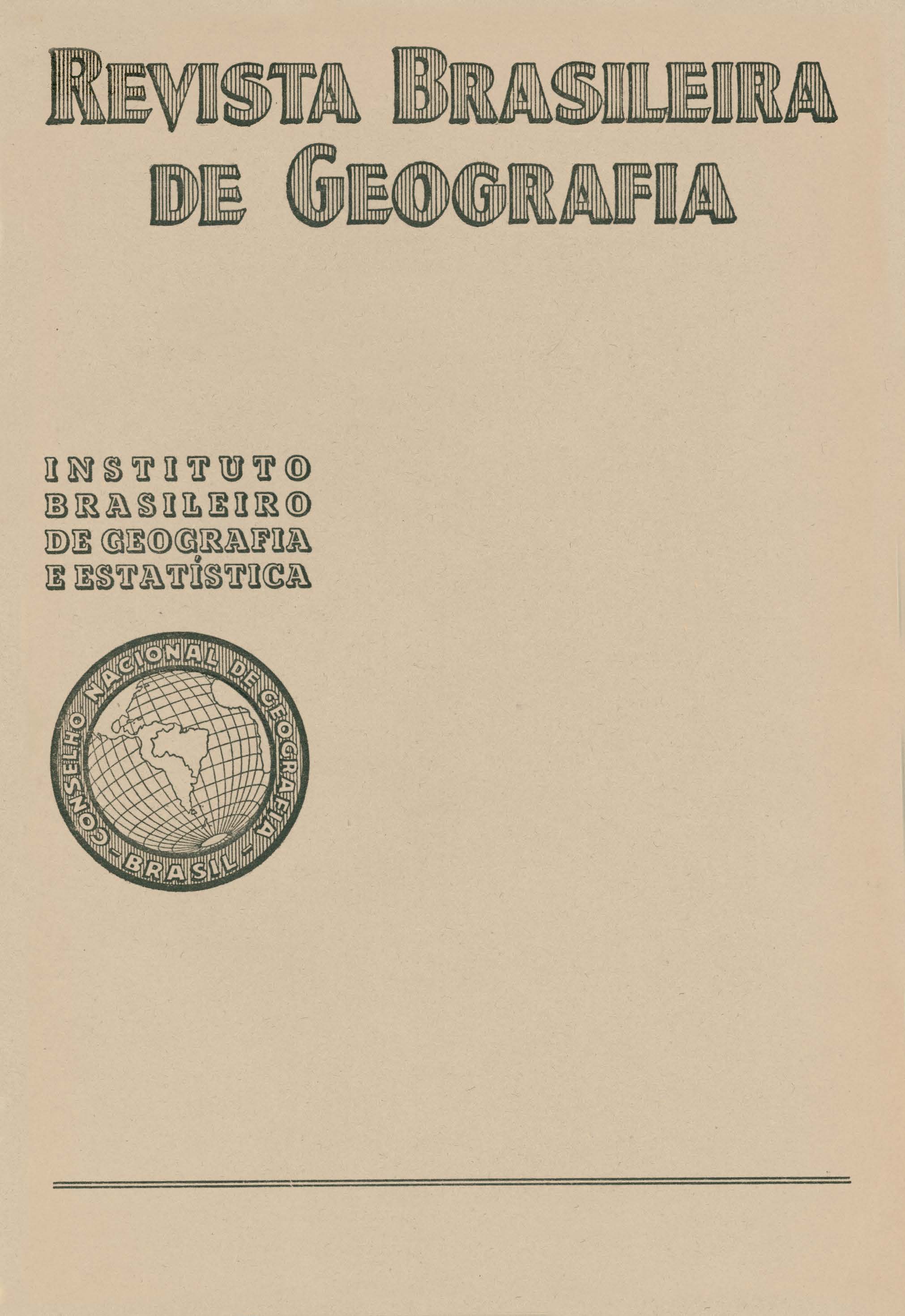O Trabalho de campo nas pesquisas originais de geografia regional
Keywords:
Metodologia da pesquisa;, Geografia regionalAbstract
The author, Prof. Francis Ruellan Directer d'Études à l'École des Hautes Études (Institute bf Geography at the Sorbonne), professor of geography at the National Faculty' of Philosophy, University of Brasil, and scientific conductor of cultural meetings at the National Council of Geography, three years ago was given charge of a series of excursions for research on regional geography Technicians of the Council as well candidates to graduation and advanced students of the faculty have joined the program.
In order to take as much advantage as possible of the limited time destined to these research excursions the author has formulated general instructions and indicated which was the unavoidable equipment that should be used for making accurate measurements and surveys.
It was considered of interest to publish the guide-book so prepared so as to be useful not only to those partaking of the excursions under the direction of Prof Francis Ruellan, but to those working alone as well.
The route adopted must naturally make it possible for one to go through the district by crossing once or several times the essential landforms It is likewise necessary to use the summits offering wide sights and to try in all occasions to observe the underground, valleys, highway sections, etc
lst - Survey and analyzation of the elementary forms of the relief constitute the first work to be done, and that has to be done in a manner the attempts as to interpretation, to follow. be based on correct observations and nomenclature
2nd - Relief study is to be based upon topography and survey works, in order to give the precise spot of observations made, to trace the profile of the forms studied over and to measure the differences in level
3rd. - In order to find out the connections between relief and structure, it is necessary to determine the hardness relating to the layers, their general direction as well as their inclination, and also the places recent alluvial deposits are located at, and to measure their thickness and give their relative height
4th - Climatological research tends to give a definition of the classes of weather in the region and their influence on the regime of the rivers, vegetation and agricultural labour, through observations and enquirers among its inhabitants
5th - Hydrographic 1esearch consist of a summary study of the regime covering rivers and stagnant waters
6th - Biographical research m1:1st tend to determine the feature of the vegetal associations to be found there, more commonly in association, that of the animals living on the place and of the connections of such associations with climate, relief and underground
7th - Human geography researchs determine: a) the forms, the situation and the distribution of human "habitat" as well as the use made of the land, for both farming and breeding; b) the predominating types of rural economy: domestic, a living-earning, or speculation and their connection with the quality of soil, the status of development and the onus resulting from workmanship and transportation means; c) the diverse kinds of country life; d) the relative importance of the regional function and internal function as to every settlement, so as to study whether it is in a period of prosperity, in a stagnant one of in decadence and find out which are the causes and consequences responsible for that situation; e) the origins of the settlement and its influence on the landscape; f) the forms of industrial life and its consequences mainly for agricultural life and that in the urban centers; g) the nature and the plan covering means of communication and how same are adapted to physical conditions and to economic life
It is easier to group out those working on research by parties:
1st - the first one, in charge of geomorphology research based on topographic works and unde1g10und study;
2nd. - the second one, in charge of climatology in its connections with hydrography, biogeography and the agricultural calendar;
3td - the third one, in charge of human and economical geography
Each patty is directed by a chief who is given the task of coordinating the observations within the plan outlined by the one leading the excursion. The latter is to assemble the three groups at least once a day for a joint exposition. On the other hand, the excursion chief prepares a daily general report according to his own observations and basing on the reports from every group It is from this general report that the scientific results of the excursion are to be drawn.
It is on the ground that the actual work of a geographer is to be done. When he returns to his office it is just to make a good use of the research journeys just ended and to formulate the problems that he will have to study on his next excursion, since work on the spot is the living source of all new observation and interpretation.






